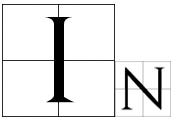The Forgotten War Between Ukraine and Russia in 1918
In 1918, a few hundred Ukrainian students fought gallantly against a 4000-strong Bolshevik army in defense of Kyiv
 In the aftermath of the Russian Revolution and the ongoing chaos of the First World War, a scramble to control the former Russian Empire began. The geopolitical scene in Eastern Europe was rocked by the events of 1917, with the growing turmoil seen in Russia sending shockwaves across the whole of Europe.
In the aftermath of the Russian Revolution and the ongoing chaos of the First World War, a scramble to control the former Russian Empire began. The geopolitical scene in Eastern Europe was rocked by the events of 1917, with the growing turmoil seen in Russia sending shockwaves across the whole of Europe.
The events unfolding in St. Petersburg were watched closely in Ukraine, where many people saw the disorder and disarray as an opportunity to free themselves from Russian control. An autonomous Ukraine, the Ukrainian People’s Republic, was quickly formed and by mid-December 1917 conflict had broken out between the Bolsheviks and the breakaway Ukrainian government.
With Ukrainian Bolsheviks within the country calling on St. Petersburg to send in troops, the Ukrainian government severed ties with Russia and, on 22 January 1918, the Central Council of the newly formed Ukrainian Republic declared its independence — marking the start of hostilities between the two sides. It is often said that “history may not repeat itself, but it rhymes” and as the horrific Russian invasion of Ukraine unfolds today before our eyes, we must look back at history to understand the present.
Just as many Ukrainians in early 1918 faced violence and aggression from their eastern neighbour, Ukrainian citizens today are also experiencing that same threat. For those Ukrainians fighting in 1918, one battle in particular has come to represent their determination and willingness to fight for their independence.
The Battle of Kruty
As the Bolshevik army was significantly larger than that of Ukraine, cities such as Kharkiv and Poltava were quickly conquered. The war-weary Ukrainian state relied on volunteers to make up the numbers in battle, and they often found the student population to be willing participants.
With a quickfire Russian advance looking possible, on 5 January 1918 students from St Volodymy Kyiv University and the Ukrainian People’s University, along with older students from a local high school, created their own volunteer unit — and whilst many of the volunteers had no previous military experience, they were filled with idealism about the prospect of an independent Ukraine.
Despite a severe shortage of weapons and equipment, on 27 January this student battalion of Sich Riflemen reached Kruty railroad station, 130km northeast of Kyiv. The following day, they linked up with a company from the Khmelnytsky Cadet School and a smaller number of Free Cossacks — giving them a total of between 400–600 troops, 300 of which were students, alongside two armoured trains. The challenge in front of them was formidable, with a Bolshevik army of 4000 troops under the command of Mikhail Muravyov now advancing on their position.
The enthusiasm and bravery of the students remained high, with a contemporary remarking: “one only had to look at their faces and see the exalted expression of one’s eyes to understand that all reasonable arguments were powerless to change their decision to go to the front and fight the enemies of the Ukrainian state.” Nevertheless, their commanders remained concerned about the students lack of combat experience, and a limited amount of ammunition was allocated to the student battalion “because there were many who did not know how to shoot.”
Under the command of Captain Nosenko, on 28 January the troops began to position themselves at either side of the railway embankment, digging trenches to fortify their positions. The student battalion, led by Captain Omelchenko, was positioned away from the railroad station and held the left-hand side of the line whilst awaiting the arrival of the Bolshevik forces.
Last stand
As the Bolsheviks approached Kruty, they sensed their opportunity. In a telegram by Muravyov to the headquarters of a fellow commander, he stated: “The way to Kyiv seems to be open, but the enemy, retreating, blows up bridges and roads, which creates great difficulties for us.” However, he also appreciated the growing ferocity of the defence offered by the Ukrainian resistance, and ended his telegram by warning “at the moment I am facing Kruty, which I did not take only for the above reasons. The enemy, retreating closer to Kyiv, begins to put up fierce resistance.”
Ukrainian intelligence watched as Bolshevik units arrived on the horizon and made their approach to Kruty’s railroad station, which marked the start of hostilities. The battle would rage for five hours, with bitter fighting around the railroad station and the hastily constructed trenches.
One Red Soldier recalled that “as we approached the station, each of us clearly heard the moans of comrades falling from enemy fire” whilst another gave the following description of the grim conditions at the front: “the field, the arable land, the mud, it’s hard to go, there are no trenches, and there were trenches on the enemy’s side and, in addition, the enemy had a lot of machine guns.”
As the fighting continued, the tide began to turn in favour of the attackers and the Ukrainians were eventually forced out of their trenches and away from Kruty. Eventually, one of the Ukrainian commanders, Captain Averkiy Honcharenko, ordered his men to retreat. Between 29–30 January, over half of the Ukrainian force would be killed in combat and, despite the heroic show of defence they offered, the Battle of Kruty would end in their defeat.
In total, 28 students would be captured by the Bolsheviks and later tortured and shot. Before the execution of one student, 19-year-old Hryhoriy Pipsky, he sang the anthem “Ukraine is not yet dead” as a sign of defiance — with other students also doing the same. Suffering heavy casualties, the courageous display of resistance by the out-numbered and out-gunned Ukrainian troops would ultimately fail to stop the Bolshevik forces from advancing, with the capital falling only a week later.
In their retreat, bridges and railway lines were however destroyed, and it took a number of days for the Bolsheviks to reorganise and re-establish their lines of communication before they captured Kyiv. The Reds may have won the battle, but the bravery of the Ukrainian forces had certainly ensured that this victory came at a cost.
Forbidden memory
For the students of Kruty, their story would not end here. Some of the bodies of those killed in the battle were later buried at Askold’s Grave in Kyiv in March 1918 — with the ceremony attended by Mykhailo Hrushevsky, President of the Ukrainian Republic, who addressed a large crowd that had gathered for the occasion. With Bolshevik rule eventually coming to Ukraine, the Soviet authorities worked to suppress the memory of Kruty, fearing it would undermine their authority and inspire future Ukrainian independence movements.
Thankfully, the Battle of Kruty would not be forgotten. In modern day Ukraine, the bravery of the troops at Kruty has in recent times been commemorated, and in Kyiv a monument was erected in 2006 to remember the event. The battle has become a symbol of Ukrainian independence and national identity, which has in turn generated its fair share of myths.
These myths have often blurred the historical reality of the battle, with details ranging from the number of troops present or even the exact date it occurred becoming obfuscated in the historiography of the event. However, what we can ascertain with certainty is the courage of those students involved: faced with limited supplies, heavily outnumbered and fearing brutal reprisals, the soldiers at Kruty made a valiant last stand against a vastly superior army and fought gallantly in defence of Kyiv.
As the horrific Russian invasion of Ukraine unfolds before our eyes today, the harrowing scenes of everyday Ukrainians bravely resisting occupation and protecting their homeland draws parallels with the heroes of Kruty. With the people of Ukraine facing an unjustified war waged by President Putin, the spirit of Kruty is still visible today — and it seems that the present will once again mirror the past.
